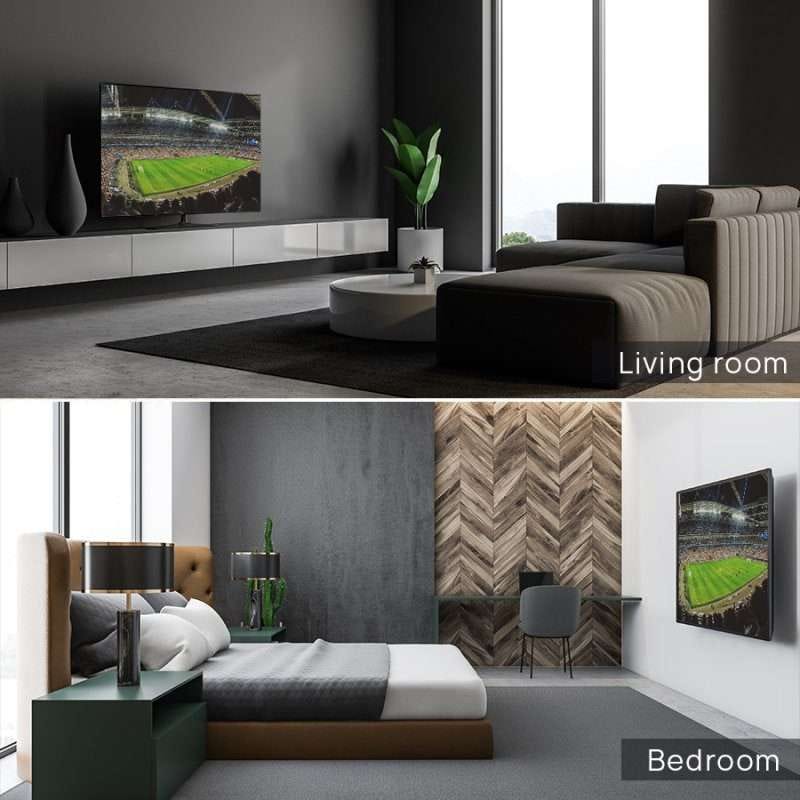What You Need to Know about HDMI Splitters
Nowadays, HDMI has become one of the most popular signal formats for high-definition video. If you need to connect multiple TVs to a single set-top box or media player, you may find there are not enough HDMI output ports on that source device. What can you do in this situation? Buy more source devices and connect each to a set of TV? This is not the simplest and the most versatile way to achieve your purpose. An HDMI splitter is what you need to send a single HDMI signal out to multiple displays. However, what exactly is it? How does it work? This blog will help you figure it out.
What is an HDMI splitter?
An HDMI splitter is a device used to distribute a single HDMI source to multiple displays. It is usually designed with an HDMI input port and multiple HDMI output ports, like 1×2, 1×4. You can connect an HDMI source, like a cable box, DVD player, PC to it via its HDMI input port, then connect multiple displays to it via its HDMI output ports. The audio and video can be split into multiple separate streams, which are fed to separate monitors or TVs simultaneously.
An HDMI splitter allows you to take one HDMI source and split it into multiple locations. For example, you can use one to distribute a live sports game source to several TVs in your bar or restaurant. If you are a shop owner, you can also adopt an HDMI splitter to display your advertisements on the TVs mounted on the wall. Although there are some limitations of using an HDMI splitter, for the most part, they can meet your needs.
How does an HDMI splitter work?
An HDMI splitter can split an HDMI signal and send it across multiple displays. All the display devices can receive the same picture in full-HD or Ultra-HD, with the same audio that the source device sends out. If you find your splitter doesn’t split HDMI signals, it’s probably due to the HDCP (High-Bandwidth Digital Content Protection) — a feature built into media players, TVs, and cable boxes that ensures you’re not playing pirated content. Some splitters can provide HDCP management which continuously authenticates HDCP encryption between all devices, ensuring correct source content is output to each display.
One of the best splitters on the market is AV Access 4KSP14-S 1×4 HDMI splitter. It reliably distributes one HDMI input signal to four outputs at resolutions up to 4K@60Hz 4:4:4 chroma subsampling. It follows HDCP 2.2 and HDMI 2.0b specifications, including supported data rates up to 18 Gbps, HDR (high dynamic range), 3D, and HD lossless audio formats. It also boasts a built-in scaler. Even when it is connected to different displays, the corresponding HDMI output is capable of scaling down automatically (down to 1080P) to feed an optimal output signal to its attached display.
What are the benefits of using an HDMI splitter?
First of all, it is quite cost-saving to use an HDMI splitter. It allows you to distribute from an HDMI source you’ve paid for, like a set-top box and split that to multiple screens. This means you don’t need to buy extra cable boxes and pay extra subscription fees, to watch an exciting movie on the TV in your living room as well as the other one in the bedroom. A new HDMI source device may cost you more than a hundred dollars, while a splitter like AV Access 4KSP12-S 1×2 HDMI splitter and 4KSP14-S 1×4 HDMI splitter, can only cost you about 50 dollars, which helps you save money in the long run.

Besides, it helps you reduce cable clutter. An HDMI splitter can offer a variety of functions, without needing multiple hookups. This means you don’t have to use multiple cables; you only need HDMI cables to connect it to the source and the display. In some offices and homes where multiple annoying cords often get in the way, an HDMI splitter can be quite useful.
That’s all for the blog. If you have any questions or suggestions, please leave a comment below.
Original copy: https://www.avaccess.com/blogs/guides/basics-about-hdmi-splitters/

